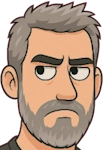The new language of Social Media
As a linguist I find the evolution of language fascinating. The concept of Web 2.0 seems to have brought with it a whole new vocabulary, some new words and some new meanings for existing words. I’ve listed a few here. If you can think of any more I’ve missed please feel free to comment and add to it.
Application An application is a program which runs on a social network. Applications can easily be shared and published.
Avatar A picture or graphic used online to represent a person’s identity. This could be a photo, a cartoon or often just an amusing graphic.
Blog Blog is short for weblog. A blog is like an online diary. It’s a series of articles or posts, with the date marked, generally updated quite regularly. These articles can be categorised, searched, tagged and consumed as RSS feeds.
Blogspace A network of blogs and all their interconnections.
Blogosphere See blogspace.
Comment It’s common now for articles or blogs to allow their readers to interact with the content by posting a comment. These are usually found directly below the article or post. Some sites require you to create an account to comment, others simply that you provide your email address. Similarly, some comments have to be approved before they will appear, others don't.
Consume This is often used with feeds. Feeds can be consumed. This means that the feed content is reused and reposted elsewhere on the web.
Fan Becoming a fan of another user or a page means you receive notifications of their activity.
Feed A feed, also called a newsfeed or RSS feed, is a small portable file which shares a summary list of a website’s content. For example, a news site might make its headlines available for sharing. Feeds are often denoted by an orange button with white markings.
Feed Reader A feed reader is a piece of software which consumes a feed, interprets the data contained in the feed and makes it available to read in a user friendly form.
Friend A friend is somebody with whom you have a network connection on a social media site. Unlike the traditional sense of the word a friend in Web 2.0 can be someone you’ve never met and never intend to.
Like You can show that you like content on social media sites by clicking a like link. Some sites use a thumbs up icon to represent the same idea.
Mashup (sometimes written "mash-up" or "mash up") A mashup is the combining of content from different sources to create a new entity.
Newsfeed See feed.
Ping A notification from a website, usually about updated content.
Pingback A pingback is a link back to a site that allows an author to see who is linking to his/her document.
Podcast (sometimes written "pod cast") Content designed to be played back on personal media players, typically mp3 or video files.
Profile A page about a person or organisation featuring information, photos, video and applications.
Report Wherever users are allowed to publish content there is potential for it to be abused. Many sites now offer an option to report inappropriate or abusive content.
Re-tweet (sometimes written "retweet") To re-tweet is to reply to a post on social media site Twitter.
RSS Feed See feed.
Sidebar A sidebar is a vertical running menu in a blog or web page. These often control the site’s navigation as well as other widgets.
Sping A sping is a ping or notification from a fake blog or splog.
Splog A splog is a fake blog, derived from “spam” and “blog”. A splog will use content from another site and have no original content of its own. They exist to drive traffic to other sites or to make money from advertising.
Status The status is a one line post on what a user is doing. It’s an easy way of keeping other users up to date with what you are doing, thinking or feeling. Other users are free to comment on your status.
Tag Tagging a document means labelling it or assigning keywords to it. By tagging an article it makes it categorises it by your chosen keyword or tag making it easier to find.
Trackback A trackback is a link that lets an author know who is linking to their article. It’s really just a reference which the author can see.
Tweet Tweeting simply means posting content on the social networking site Twitter.
Unlike Where there are options to say that you like something, there is also the option to “unlike” something. This is different from saying you dislike it, it is merely revoking your “like”.
Unfollow Some sites such as Twitter allow you to follow another person’s work or blog. To stop following somebody you “Unfollow” them.
Unlist If you have listed something, e.g. your website in a directory, then you can “unlist” it.
Vlog A vlog is a video blog, a blog where all the content is in video format.
Vodcast Vodcasting is podcasting using video.
Wall An area on a page or profile where people can post. The owner has editorial control.
Widget A widget is a small program which usually sits in a sidebar.
Wiki A wiki is a website where the content is created by its users. The biggest and most famous example is Wikipedia.
